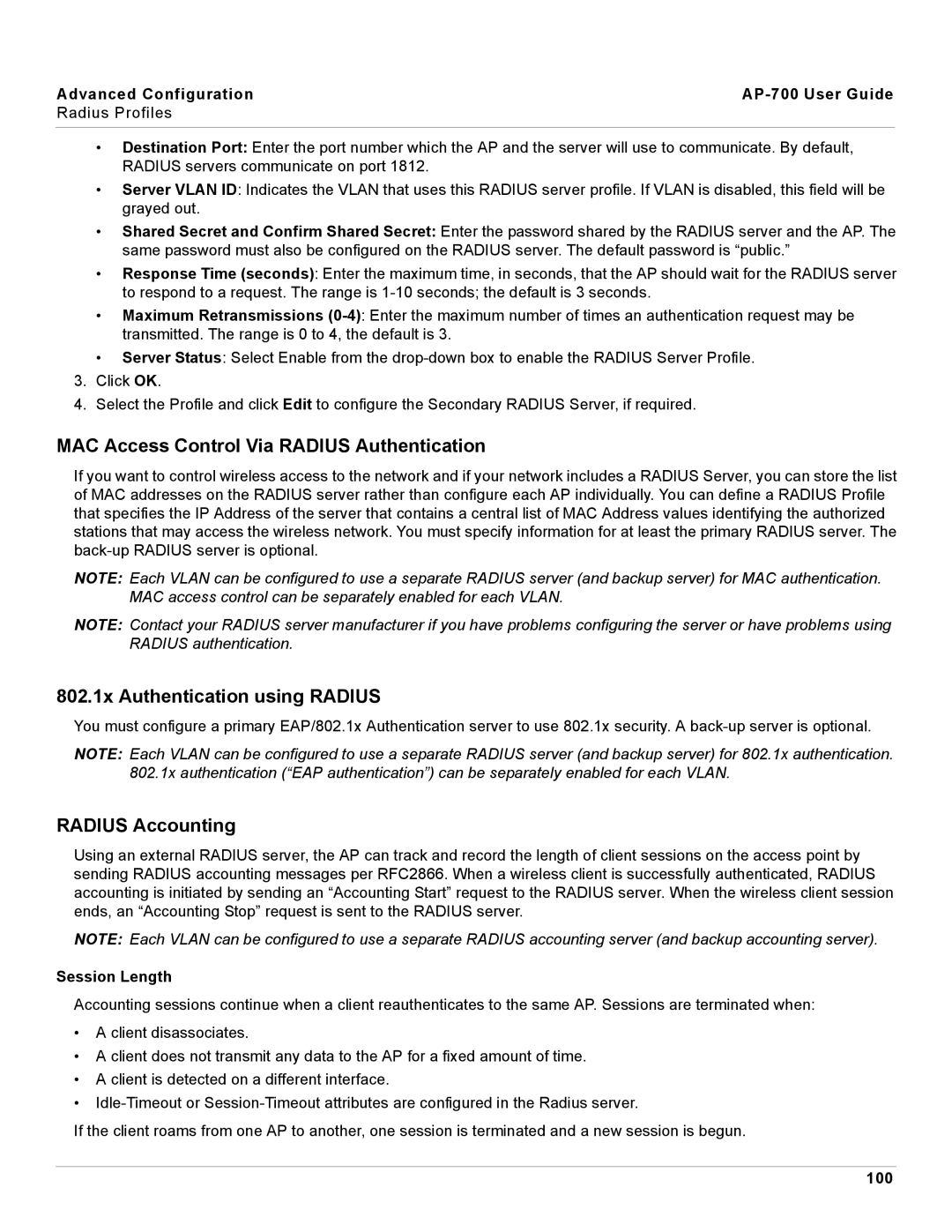Advanced Configuration |
|
Radius Profiles |
|
|
|
•Destination Port: Enter the port number which the AP and the server will use to communicate. By default, RADIUS servers communicate on port 1812.
•Server VLAN ID: Indicates the VLAN that uses this RADIUS server profile. If VLAN is disabled, this field will be grayed out.
•Shared Secret and Confirm Shared Secret: Enter the password shared by the RADIUS server and the AP. The same password must also be configured on the RADIUS server. The default password is “public.”
•Response Time (seconds): Enter the maximum time, in seconds, that the AP should wait for the RADIUS server to respond to a request. The range is
•Maximum Retransmissions
•Server Status: Select Enable from the
3.Click OK.
4.Select the Profile and click Edit to configure the Secondary RADIUS Server, if required.
MAC Access Control Via RADIUS Authentication
If you want to control wireless access to the network and if your network includes a RADIUS Server, you can store the list of MAC addresses on the RADIUS server rather than configure each AP individually. You can define a RADIUS Profile that specifies the IP Address of the server that contains a central list of MAC Address values identifying the authorized stations that may access the wireless network. You must specify information for at least the primary RADIUS server. The
NOTE: Each VLAN can be configured to use a separate RADIUS server (and backup server) for MAC authentication. MAC access control can be separately enabled for each VLAN.
NOTE: Contact your RADIUS server manufacturer if you have problems configuring the server or have problems using RADIUS authentication.
802.1x Authentication using RADIUS
You must configure a primary EAP/802.1x Authentication server to use 802.1x security. A
NOTE: Each VLAN can be configured to use a separate RADIUS server (and backup server) for 802.1x authentication. 802.1x authentication (“EAP authentication”) can be separately enabled for each VLAN.
RADIUS Accounting
Using an external RADIUS server, the AP can track and record the length of client sessions on the access point by sending RADIUS accounting messages per RFC2866. When a wireless client is successfully authenticated, RADIUS accounting is initiated by sending an “Accounting Start” request to the RADIUS server. When the wireless client session ends, an “Accounting Stop” request is sent to the RADIUS server.
NOTE: Each VLAN can be configured to use a separate RADIUS accounting server (and backup accounting server).
Session Length
Accounting sessions continue when a client reauthenticates to the same AP. Sessions are terminated when:
•A client disassociates.
•A client does not transmit any data to the AP for a fixed amount of time.
•A client is detected on a different interface.
•
If the client roams from one AP to another, one session is terminated and a new session is begun.
100
